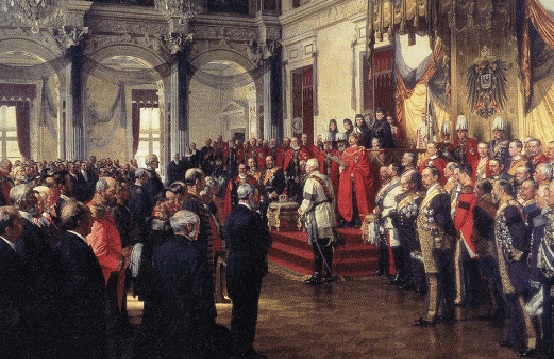
In the mid-19th century, Germany wasn’t a country. It was a chaotic jigsaw puzzle of kingdoms, duchies, and principalities—39 in total—each with its own ruler, army, and agenda. But within just a few years, that patchwork was transformed into a unified empire, largely thanks to the vision and cunning of one man: Otto von Bismarck.
Why Was Germany Divided for So Long?
The division of Germany can be traced back to the collapse of the Holy Roman Empire in 1806. After Napoleon swept through Europe, the German-speaking lands were left fragmented. The Congress of Vienna in 1815 established the German Confederation, a loose alliance of 39 states led nominally by Austria.
However, these states were often in conflict, either with each other or with nationalist movements pushing for unity. Prussia and Austria, the two largest powers, both had ambitions to lead any future German nation.
In 1848, a wave of liberal revolutions spread across Europe, including the German states. The Frankfurt Parliament attempted to unify Germany under a constitutional monarchy, but failed when the King of Prussia refused the crown. By the 1850s, unification seemed like a distant dream.
Three Wars That Changed Everything
Otto von Bismarck believed unification wouldn’t come through speeches or diplomacy alone. As he famously said, “The great questions of the day will not be decided by speeches and majority decisions, but by iron and blood.”
Between 1864 and 1871, Bismarck engineered three wars that would change the face of Europe.
1. The Danish War (1864)
In 1864, Prussia and Austria jointly declared war on Denmark over the duchies of Schleswig and Holstein. The short, decisive conflict ended with Denmark ceding both territories. It was a test of military strength and cooperation—and set the stage for the next move.
2. The Austro-Prussian War (1866)
Tensions quickly rose between Prussia and Austria over control of the newly acquired duchies. Bismarck seized the opportunity. In a seven-week war, Prussia decisively defeated Austria at the Battle of Königgrätz.
The result? Austria was excluded from German affairs, and the North German Confederation was formed under Prussian leadership.
3. The Franco-Prussian War (1870–71)
To rally the southern German states, Bismarck needed a common enemy. Through strategic manipulation (including editing the Ems Dispatch to provoke outrage), he pushed France into declaring war.
The southern states joined Prussia, and together they defeated France. Paris was besieged, and Napoleon III was captured. The victory was not just military—it was symbolic.
The Role of Otto von Bismarck
Bismarck was more than a war planner; he was a political genius. His philosophy of Realpolitik prioritized power and pragmatism over ideology. He formed shifting alliances, used nationalism strategically, and always kept the long game in mind.
In 1871, in the opulent Hall of Mirrors at the Palace of Versailles, the German Empire was proclaimed. King Wilhelm I of Prussia became the first Kaiser, and Bismarck was named Chancellor. The empire now included all German states except Austria.
Read more: Otto von Bismarck: The Iron Chancellor Who Forged a Nation
Crowning the Kaiser: January 18, 1871
The crowning of Wilhelm I marked the culmination of centuries of fragmented identity. Germany was now a unified, industrializing, and militarily powerful empire. The symbolism of declaring this empire in Versailles—France’s royal palace—was not lost on anyone.
Bismarck, always calculating, used this moment to both celebrate victory and signal a new era of German dominance in Europe.
Challenges After Unification
While the military unification was swift, the political and cultural integration of the new empire was more complicated.
- Religious divisions: Bismarck launched the Kulturkampf (culture struggle) against the Catholic Church, which backfired and alienated many Catholics.
- Rise of socialism: The working class began organizing politically, which Bismarck tried to curb through anti-socialist laws.
- Federalism vs. centralism: Balancing the powers of individual states with the central government was an ongoing challenge.
Despite these issues, the new German Empire became a major player on the world stage.
Legacy of German Unification
The unification of Germany reshaped Europe. A new balance of power emerged, and tensions would eventually lead to World War I. Yet, the political structure and national identity created under Bismarck lasted well into the 20th century.
Germany’s rapid industrial growth, military strength, and centralized administration all had roots in this foundational period.
Explore More German History
- Otto von Bismarck: The Iron Chancellor Who Forged a Nation
- Kaiser Wilhelm I: The First Emperor of a United Germany
- Realpolitik Explained: The Cold-Blooded Art of Power in German Politics
- Social Welfare in Germany: How Bismarck Invented the Modern Safety Net
- Prussia Before Germany: The Military State That Shaped a Nation
Want more gripping stories from Germany’s past? Explore the full History section and step into the world that shaped modern Europe.
